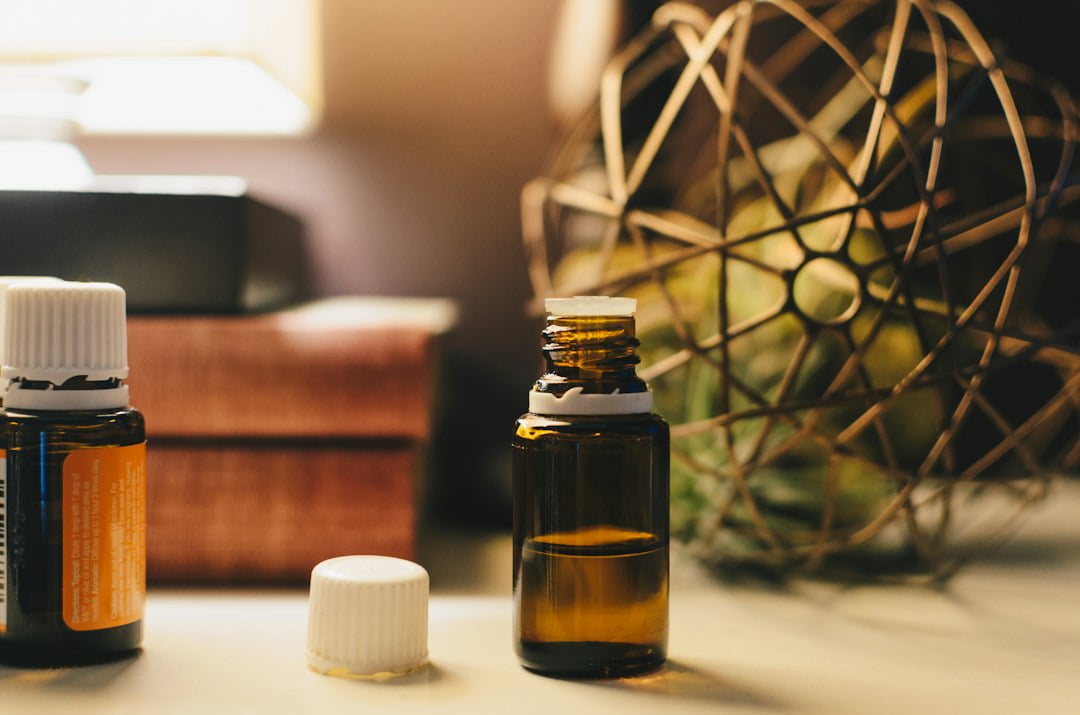
10 Achievable Physical Health Goals to Boost Your Overall Wellness
Physical health is a crucial aspect of overall well-being. It encompasses various factors such as exercise, diet, sleep, and stress management. When we prioritize our physical health, we are taking steps towards living a better life. Physical health not only affects our physical appearance but also has a significant impact on our mental and emotional well-being.
When we are physically healthy, we have more energy, feel more confident, and are better equipped to handle the challenges that life throws at us. It is important to understand that physical health is not just about looking good; it is about feeling good from the inside out. By taking care of our bodies, we can improve our quality of life and increase our longevity.
Key Takeaways
- Regular exercise is crucial for maintaining physical health.
- Improving cardiovascular health can be achieved through aerobic exercise.
- Building strength and endurance requires resistance training.
- Flexibility and mobility can be enhanced through stretching and mobility exercises.
- Maintaining a healthy weight and reducing the risk of chronic diseases requires a balanced diet and regular exercise.
Goal 1: Incorporating Regular Exercise into Your Routine
Regular exercise is one of the most important aspects of maintaining physical health. It has numerous benefits for both our physical and mental well-being. Exercise helps to strengthen our muscles, improve cardiovascular health, boost our immune system, and increase our energy levels.
Incorporating regular exercise into your routine doesn’t have to be complicated or time-consuming. Start by finding an activity that you enjoy and that fits into your schedule. It could be as simple as going for a walk or jog in the morning or joining a fitness class at your local gym.
Make exercise a priority by scheduling it into your daily routine. Set realistic goals for yourself and gradually increase the intensity and duration of your workouts over time. Remember to listen to your body and give yourself rest days to allow for recovery.
Goal 2: Improving Your Cardiovascular Health
Cardiovascular health is essential for overall physical well-being. It refers to the health of your heart and blood vessels. Poor cardiovascular health can lead to conditions such as heart disease, high blood pressure, and stroke.
To improve your cardiovascular health, incorporate aerobic exercises into your routine. These exercises increase your heart rate and improve the efficiency of your cardiovascular system. Examples of aerobic exercises include running, swimming, cycling, and dancing.
In addition to exercise, maintaining a healthy diet is crucial for cardiovascular health. Include foods that are rich in nutrients and low in saturated fats, cholesterol, and sodium. Eat plenty of fruits, vegetables, whole grains, lean proteins, and healthy fats such as avocados and nuts.
Goal 3: Building Strength and Endurance
| Goal 3: Building Strength and Endurance |
|---|
| 1. Number of push-ups completed in one minute |
| 2. Distance ran in 30 minutes |
| 3. Weight lifted in a deadlift |
| 4. Time taken to complete a 5k run |
| 5. Number of pull-ups completed in one set |
Building strength and endurance is another important aspect of physical health. Strength training helps to increase muscle mass, improve bone density, and boost metabolism. It also helps to prevent injuries and improve overall physical performance.
To build strength and endurance, incorporate resistance training into your exercise routine. This can be done using free weights, weight machines, resistance bands, or bodyweight exercises such as push-ups and squats. Aim to work all major muscle groups at least twice a week.
In addition to strength training, cardiovascular exercises such as running or cycling can help to improve endurance. These exercises increase your heart rate and challenge your cardiovascular system.
Goal 4: Enhancing Your Flexibility and Mobility
Flexibility and mobility are often overlooked aspects of physical health but are crucial for maintaining a healthy body. Flexibility refers to the range of motion in your joints, while mobility refers to the ability to move freely without pain or stiffness.
To enhance flexibility and mobility, incorporate stretching exercises into your routine. Stretching helps to improve joint flexibility, prevent muscle imbalances, and reduce the risk of injuries. It can also help to relieve muscle tension and improve posture.
Include both static stretches (holding a stretch for a period of time) and dynamic stretches (stretching while moving) in your routine. Focus on stretching all major muscle groups, paying particular attention to areas that are tight or prone to stiffness.
Goal 5: Maintaining a Healthy Weight

Maintaining a healthy weight is crucial for overall physical health. Excess weight can increase the risk of various health conditions such as heart disease, diabetes, and certain types of cancer. It can also put strain on your joints and lead to mobility issues.
To achieve and maintain a healthy weight, it is important to find a balance between calorie intake and expenditure. This can be achieved through a combination of regular exercise and a healthy diet.
Incorporate both cardiovascular exercises and strength training into your routine to burn calories and build muscle. Aim for at least 150 minutes of moderate-intensity aerobic activity or 75 minutes of vigorous-intensity aerobic activity per week.
In terms of diet, focus on consuming nutrient-dense foods that are low in calories but high in vitamins, minerals, and fiber. Include plenty of fruits, vegetables, whole grains, lean proteins, and healthy fats in your meals. Avoid or limit the consumption of processed foods, sugary drinks, and high-fat foods.
Goal 6: Reducing Your Risk of Chronic Diseases
Physical health plays a significant role in reducing the risk of chronic diseases such as heart disease, diabetes, and certain types of cancer. By maintaining a healthy lifestyle that includes regular exercise and a balanced diet, you can significantly reduce your risk of developing these conditions.
Regular exercise helps to improve cardiovascular health, lower blood pressure, reduce cholesterol levels, and control blood sugar levels. It also helps to maintain a healthy weight and prevent obesity, which is a major risk factor for chronic diseases.
A healthy diet that is rich in fruits, vegetables, whole grains, lean proteins, and healthy fats provides the necessary nutrients to support overall health and reduce the risk of chronic diseases. Avoiding or limiting the consumption of processed foods, sugary drinks, and high-fat foods is also important.
Goal 7: Improving Your Sleep Quality
Sleep is often overlooked but is crucial for physical health. It is during sleep that our bodies repair and regenerate, and lack of sleep can have a negative impact on our overall well-being.
To improve sleep quality, establish a regular sleep schedule and stick to it. Aim for 7-9 hours of sleep per night. Create a relaxing bedtime routine that includes activities such as reading, taking a warm bath, or practicing relaxation techniques.
Avoid caffeine, nicotine, and alcohol close to bedtime, as these can interfere with sleep. Create a sleep-friendly environment by keeping your bedroom cool, dark, and quiet. Invest in a comfortable mattress and pillows that support your body.
Regular exercise can also help to improve sleep quality. However, avoid exercising too close to bedtime, as it can increase alertness and make it difficult to fall asleep.
Goal 8: Managing Your Stress Levels
Stress can have a significant impact on physical health. It can lead to various health problems such as high blood pressure, heart disease, obesity, and weakened immune system.
To manage stress levels, incorporate stress-reducing activities into your routine. Regular exercise is one of the most effective ways to reduce stress. It helps to release endorphins, which are natural mood boosters.
In addition to exercise, practice relaxation techniques such as deep breathing, meditation, or yoga. Engage in activities that you enjoy and that help you relax, such as reading, listening to music, or spending time in nature.
It is also important to prioritize self-care and make time for activities that bring you joy and help you unwind. Set boundaries and learn to say no when necessary. Surround yourself with positive and supportive people who lift you up.
Goal 9: Staying Hydrated and Nourished
Staying hydrated and nourished is essential for maintaining physical health. Water is crucial for various bodily functions such as digestion, circulation, temperature regulation, and waste removal. It also helps to keep our skin healthy and glowing.
To stay hydrated, aim to drink at least 8 cups (64 ounces) of water per day. Increase your water intake if you are exercising or in hot weather. Carry a water bottle with you throughout the day as a reminder to drink water.
In terms of nutrition, focus on consuming a balanced diet that includes a variety of fruits, vegetables, whole grains, lean proteins, and healthy fats. These foods provide the necessary nutrients to support overall health and well-being.
Avoid or limit the consumption of sugary drinks, processed foods, and foods that are high in saturated fats, cholesterol, and sodium. These foods can contribute to weight gain, inflammation, and various health problems.
Goal 10: Prioritizing Your Mental Health and Emotional Well-being
Physical health is closely linked to mental health and emotional well-being. When we prioritize our mental health, we are better equipped to take care of our physical health.
To prioritize your mental health and emotional well-being, practice self-care on a regular basis. This can include activities such as journaling, practicing mindfulness or meditation, engaging in hobbies that bring you joy, or spending time with loved ones.
Manage stress levels by practicing stress management techniques such as deep breathing exercises or engaging in activities that help you relax. Seek support from friends, family, or a mental health professional if needed.
Take breaks when necessary and listen to your body’s needs. Prioritize rest and relaxation to recharge your mind and body. Practice gratitude by focusing on the positive aspects of your life and expressing gratitude for them.
Achieving Your Physical Health Goals for a Better Life
In conclusion, physical health is a crucial aspect of overall well-being. By incorporating regular exercise into our routine, improving cardiovascular health, building strength and endurance, enhancing flexibility and mobility, maintaining a healthy weight, reducing the risk of chronic diseases, improving sleep quality, managing stress levels, staying hydrated and nourished, and prioritizing mental health and emotional well-being, we can achieve our physical health goals and live a better life.
Physical health not only improves our physical appearance but also has a significant impact on our mental and emotional well-being. When we prioritize our physical health, we have more energy, feel more confident, and are better equipped to handle the challenges that life throws at us.
By taking care of our bodies through regular exercise, a healthy diet, adequate sleep, stress management techniques, and self-care practices, we can improve our quality of life and increase our longevity. Remember that physical health is a lifelong journey, and it is never too late to start taking steps towards a healthier lifestyle.
FAQs
What are physical health goals?
Physical health goals are specific objectives that individuals set for themselves to improve their physical health and well-being. These goals can include things like losing weight, building muscle, improving cardiovascular endurance, or reducing stress.
Why are physical health goals important?
Physical health goals are important because they help individuals take control of their health and well-being. By setting specific goals, individuals can track their progress and stay motivated to make positive changes in their lives.
How do I set physical health goals?
To set physical health goals, start by identifying areas of your health that you would like to improve. Then, set specific, measurable, achievable, relevant, and time-bound (SMART) goals that will help you achieve those improvements. For example, if you want to improve your cardiovascular endurance, you might set a goal to run a 5K race in three months.
What are some examples of physical health goals?
Some examples of physical health goals include losing a certain amount of weight, running a certain distance or time, lifting a certain amount of weight, reducing stress through meditation or yoga, or improving flexibility through stretching.
How can I stay motivated to achieve my physical health goals?
To stay motivated to achieve your physical health goals, try tracking your progress, celebrating small victories, and finding a support system of friends or family members who can encourage you along the way. You can also try setting rewards for yourself when you reach certain milestones, such as treating yourself to a massage or a new workout outfit.


















